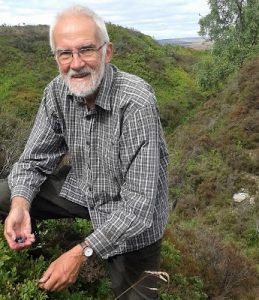
What is a tree and what is a bush or shrub? Very often we tend to refer to certain shrubs as trees when in actual fact they are not. For a plant to be classed as a tree it must grow to at least 6 metres tall and have one single stem or trunk which is covered in bark. It should also have 1 to 2 metres of clear trunk before any branches are formed and above all it must be perennial.
During the ice age Britain was devoid of any trees and it was only when the ice melted that trees began to gradually migrate northward from the warmer parts of the continent. At this time sea levels were much lower and the English Channel did not exist. It was only when the polar ice caps began to melt causing sea levels to rise that the English Channel was formed making Britain an Island. Prior to this both humans and animals could walk across from France to England bringing plant life with them. Seeds of trees and other vegetation were also carried on the wind.
About 30 species of tree came to Britain before the sea level rose about 6,000 BC and we call these our native trees. We also know that 70% of the land mass was covered by trees before the advent of man. We can also tell what sorts of trees were here many thousands of years ago by digging up peat and mud samples which contain the remains of their pollen grains.
Early man cut down trees to make grazing land for cattle, to build shelters and to get wood for fires but they did not remove the stumps because that was much too difficult with the primitive tools that they had. The tree stumps sprouted lots of little stems and these were found to be much easier to cut for firewood and to weave into fences etc. and this practice, which dates back to at least 3,800 BC became known as coppicing.
As man developed wood was used more and more for tools, machines, and furniture. Different species of wood have different properties. Some are springy, some are brittle, some hard, some soft and some are splintery. Man learned to use these different properties in combination and so for instance, a wheel is made up of 3 or 4 different species of wood to give maximum life and performance. For hundreds of years wood has been used in buildings and ships. In more recent years it has been used in mining and as sleepers in railway track. The bark of the tree is also used in the tanning of leather, which is a process of turning animal hide into leather.
This of course has had an enormous effect on number of trees in Britain. By the First World War in 1914 only 7% of the country was covered by trees and we ran out of wood. In 1919 the Forestry Commission was set up to grow trees and we now have 14% tree cover made up of many hundreds of different species.
Patrick’s talk was both educational, interesting and humorous and the vast majority of our members classed it as excellent.
